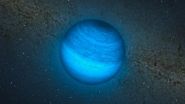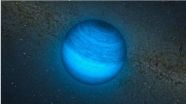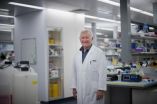(Press-News.org) The leggiest animal in the world, the millipede lllacme plenipes, was re-discovered several years ago in California by Paul Marek. Now, Marek and his colleagues provide further details of the surprisingly complex anatomy of this diminutive creature and its extreme rarity, limited to a handful of spots just south of San Francisco. More details about the species and its biology can be read in an article that was recently published in the open access journal ZooKeys.
Millipedes have the most legs of any animal group. From their ancestors with just one pair of legs per body segment, millipedes evolved two pairs (four total) through segmental fusion. This coalescence of segments happened deep in the evolutionary history of millipedes, more than 400 million years ago. Four legs provide more thrust on a per segment basis, which benefits millipedes to help them burrow underground--e.g., to escape predators or access new resources. Those individuals with a coalescence of segments and hence a better burrowing ability, were able to persist in this early primordial ecosystem.
The most noticeable thing about millipedes are their number of legs, which lined up along their bodysides step in synchronous "metachronal waves". The acme of legginess in millipedes, and all animals for that matter, is the Californian species Illacme plenipes (literally meaning "in highest fulfillment of feet"). The females have up to an astounding 750 legs, outclassing the males who only have a maximum leg count of 562. The proliferation of legs may be an adaptation for its lifestyle spent burrowing underground or (based on the presence of features like legs with bifurcate claws and other traits known to be associated with rock-climbing in millipedes) enable it to cling tightly to the sandstone boulders found exclusively associated with the species in its habitat
"This relict species is the only representative of its family in the Western Hemisphere. Its closest presumed relative, Nematozonium filum, lives in South Africa and this early relationship was established more than 200 million years ago when the continents coalesced in the landmass Pangaea", said the lead author Dr Paul Marek, from the University of Arizona.
VIDEO:
This is a movie of Illacme plenipes with 662 legs showing live movement.
Click here for more information.
Not only is this species the leggiest animal known on the planet, it also has surprising anatomical features: body hairs that produce silk, a jagged and scaly translucent exoskeleton, and comparatively massive (given its diminutive size) antennae that are used to feel its way through the dark because it lacks eyes. Its mouth, unlike other millipedes that chew with developed grinding mouthparts, is rudimentary and fused into structures that are probably used for piercing and sucking plant or fungal tissues.
This rare and ancient-looking creature's home is California, on the outskirts of Silicon Valley. The species is exceedingly scarce and limited to just a single tiny area near San Juan Bautista, just east of the San Andreas Fault. Based on the known environmental conditions where it lives, the species' probable distribution elsewhere in California was inferred. Yet still restricted to a small geographical range, the analysis indicated other areas of suitability limited to the terrestrial areas on the edge of Monterey Bay eastward to San Juan Bautista and throughout the Salinas Valley. What's unique about this area, and seems to be correlated with the model's area of highest suitability, is the thick layer of fog that accumulates in the area--like soup in a deep bowl. The fog and the species' unique set of features in its habitat (oak forests, sandstone boulders, and fine sandy soil) make this area a special place and certainly deserving of attention as the home of this rare and superlative beast.
INFORMATION:
Original source
Marek PE, Shear WA, Bond JE (2012) A redescription of the leggiest animal, the millipede Illacme plenipes, with notes on its natural history and biogeography (Diplopoda, Siphonophorida, Siphonorhinidae). ZooKeys 241: 77. doi: 10.3897/zookeys.241.3831
About ZooKeys
ZooKeys is a peer-reviewed, open-access journal launched to support free exchange of ideas and information in biodiversity science, issued by Pensoft Publishers. All papers published in ZooKeys can be freely copied, downloaded, printed and distributed at no charge for the reader. ZooKeys implemented several cutting-edge innovation in publishing and dissemination of science information and is considered a technological leader in its field.
Posted by Pensoft Publishers.
The leggiest animal on Earth lives in the outskirts of Silicon Valley
2012-11-14
ELSE PRESS RELEASES FROM THIS DATE:
Lost in space: Rogue planet spotted?
2012-11-14
Astronomers using ESO's Very Large Telescope and the Canada-France-Hawaii Telescope have identified a body that is very probably a planet wandering through space without a parent star. This is the most exciting free-floating planet candidate so far and the closest such object to the Solar System at a distance of about 100 light-years. Its comparative proximity, and the absence of a bright star very close to it, has allowed the team to study its atmosphere in great detail. This object also gives astronomers a preview of the exoplanets that future instruments aim to image ...
Astronomers find 'homeless' planet wandering through space
2012-11-14
A planet that is not orbiting a star, effectively making it homeless, has been discovered by a team of University of Montreal (UdeM) researchers working with European colleagues and data provided by the Canada-France-Hawaii Telescope (CFHT) and the European Southern Observatory's Very Large Telescope (VLT). "Although theorists had established the existence of this type of very cold and young planet, one had never been observed until today," said Étienne Artigau, an astrophysicist at UdeM. The absence of a shining star in the vicinity of this planet enabled the team to study ...
Georgia Tech releases cyber threats forecast for 2013
2012-11-14
The year ahead will feature new and increasingly sophisticated means to capture and exploit user data, escalating battles over the control of online information and continuous threats to the U.S. supply chain from global sources. Those were the findings made by the Georgia Tech Information Security Center (GTISC) and the Georgia Tech Research Institute (GTRI) in today's release of the Georgia Tech Emerging Cyber Threats Report for 2013. The report was released at the annual Georgia Tech Cyber Security Summit, a gathering of industry and academic leaders who have distinguished ...
Pancreas stem cell discovery may lead to new diabetes treatments
2012-11-14
Stem cells in the adult pancreas have been identified that can be turned into insulin producing cells, a finding that means people with type 1 diabetes might one day be able to regenerate their own insulin-producing cells.
The discovery was made by scientists from the Walter and Eliza Hall Institute and provides further evidence that stem cells don't only occur in the embryo.
The ability to produce the hormone insulin is crucial for controlling blood sugar (glucose) levels. In people with type 1 diabetes the body's immune system destroys the insulin-producing beta cells ...
Antibody-coated stents: Indication of disadvantages
2012-11-14
If narrowed or blocked coronary vessels have to be widened or opened, a vascular support (stent) is usually inserted. Drug-coated stents are preferred for patients at high risk of renewed narrowing of vessels (restenosis). However, the use of antibody-coated stents has been increasing in recent years. Current studies provide indications that these new antibody-coated stents more frequently lead to myocardial infarction and make re-operation necessary. This is the conclusion reached in the rapid report of the German Institute for Quality and Efficiency in Health Care (IQWiG), ...
'Missing link' discovered in the defence mechanism of the tuberculosis pathogen
2012-11-14
Brussels, 14 November 2012 – Flemish biologists lead by Joris Messens (VIB / Vrije Universiteit Brussel) have discovered that Mycobacterium tuberculosis – the bacterium that causes tuberculosis – has an ingenious defence mechanism against oxygen. This knowledge is important in the search for a treatment for tuberculosis. 9.4 million people are infected with tuberculosis annually and 1.7 million people die as a result.
Joris Messens: "We have discovered how Mycobacterium survives the oxygen stress in our body, namely with the aid of the protein mycoredoxin-1. This opens ...
Triclosan in cosmetics and personal care products can increase allergy risk
2012-11-14
Triclosan - an antibacterial chemical found in toothpaste and other products - can contribute to an increased risk of allergy development in children. This comes from the Norwegian Environment and Childhood Asthma Study, in which the Norwegian Institute of Public Health is involved. Similar results are reported in the USA.
Triclosan has been in use for decades, but was recently associated with allergies in children in an American study, the National Health and Nutrition Examination Survey (NHANES). The new Norwegian study found similar associations between allergies ...
New brain gene gives us edge over apes, study suggests
2012-11-14
Scientists have taken a step forward in helping to solve one of life's greatest mysteries – what makes us human?
An international team of researchers have discovered a new gene that helps explain how humans evolved evolved from apes.
Scientists say the gene – called miR-941 – appears to have played a crucial role in human brain development and may shed light on how we learned to use tools and language.
Researchers say it is the first time that a new gene – carried only by humans and not by apes – has been shown to have a specific function within the human body.
A ...
Babies born to stressed mothers more likely to be bullied at school
2012-11-14
Children whose mothers were overly stressed during pregnancy are more likely to become victims of bullying at school.
New research from the University of Warwick shows stress and mental health problems in pregnant women may affect the developing baby and directly increases the risk of the child being victimised in later life.
The study has been published in the Journal of Child Psychology and Psychiatry and is based on 8,829 children from the Avon Longtitudinal Study of Parents and Children (ALSPAC).
Professor Dieter Wolke, Professor of Developmental Psychology at ...
Study investigates headshaking in horses
2012-11-14
Headshaking syndrome is when a horse shakes or jerks its head uncontrollably for no apparent reason. There are striking clinical similarities between facial pain syndromes in people, most notably trigeminal neuralgia, and headshaking in horses. Although some progress has been made towards both diagnosing and treating the condition in horses, the pathology of the disease remains unknown and further research is needed.
A recent study led by academics from the University of Bristol's School of Veterinary Sciences and the University of Liverpool, evaluated the long-term ...



